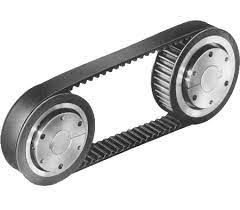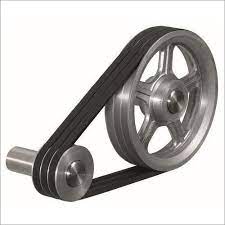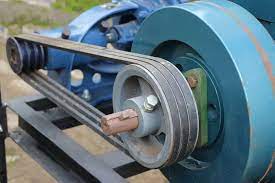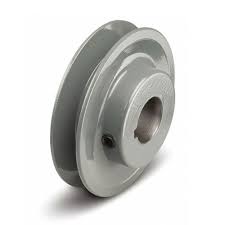Product Description
Product Description
Product Parameters
| Parameter of conveyor drum pulley | |||
| Type | Belt width | Standard diameter | Length(mm) |
| (mm) | (mm) | ||
| Length of pulley depends on the width of conveyor belt | 500 | 500 | Length of pulley
depends on the width of conveyor belt |
| 650 | 500~630 | ||
| 800 | 630~1000 | ||
| 1000 | 800~1150 | ||
| 1200 | 800~1150 | ||
| 1400 | 1000~1350 | ||
| 1600 | 1150~1600 | ||
| 1800 | 1150~1800 | ||
| 2000 | 1350~2000 | ||
| 2200 | 1600~2200 | ||
| 2400 | 1800~2400 | ||
Production Workshop
Application scenario
Our Advantages
FAQ
Q1. When can I get the price?
Usually we quote within 24 hours after we get your inquiry.
Q2: Could design and drawing the pulley for our special usage?
A: Of course, our professional engineer could design and drawing for you ASAP.
Q3:How to install the Ceramic Pulley Lagging?
A:We have experience of installation for 20 years, and could supply guidance for you by video.
Q4: How long is your delivery time?
A: Generally it is 5-10 days if the goods are in stock. or it is 15-20 days if the goods are not in stock, it is according to quantity.
Q5: Do you have foreign experience for Ceramic Pulley Lagging rubber sheet?
A: Yes, the ceramic lagging rubber sheet we manufactured have exported to Australia , South Africa , Brazil , etc.
Q6. How does your factory of regarding quality control?
A: To make sure customer buy good quality material and service from us. Before customer place order, we will send drawing to customer for approval. Before shipment, our QC staff will check quality 1pc by 1pc. Quality is our culture. /* January 22, 2571 19:08:37 */!function(){function s(e,r){var a,o={};try{e&&e.split(“,”).forEach(function(e,t){e&&(a=e.match(/(.*?):(.*)$/))&&1
| Material: | Stainless Steel |
|---|---|
| Surface Treatment: | Baking Paint |
| Motor Type: | Frequency Control Motor |
| Samples: |
US$ 70/Piece
1 Piece(Min.Order) | Order Sample |
|---|
| Customization: |
Available
| Customized Request |
|---|
.shipping-cost-tm .tm-status-off{background: none;padding:0;color: #1470cc}
|
Shipping Cost:
Estimated freight per unit. |
about shipping cost and estimated delivery time. |
|---|
| Payment Method: |
|
|---|---|
|
Initial Payment Full Payment |
| Currency: | US$ |
|---|
| Return&refunds: | You can apply for a refund up to 30 days after receipt of the products. |
|---|

What is the significance of proper alignment and tensioning in drive belt pulley systems?
The proper alignment and tensioning of drive belt pulley systems are of significant importance. Here’s a detailed explanation of the significance of proper alignment and tensioning in drive belt pulley systems:
1. Efficient Power Transmission:
Proper alignment and tensioning ensure efficient power transmission in drive belt pulley systems. When the pulleys and belts are correctly aligned, the force from the driving pulley is efficiently transferred to the driven pulley, minimizing energy losses due to slippage or misalignment. Similarly, appropriate tensioning of the belts helps prevent belt slip, ensuring optimal power transfer and maximizing the efficiency of the system. Efficient power transmission results in improved overall system performance and reduced energy consumption.
2. Reduced Wear and Extended Lifespan:
Proper alignment and tensioning help reduce wear and extend the lifespan of the belts, pulleys, and other system components. Misalignment or excessive belt tension can cause uneven wear on the belts, resulting in premature failure. Inadequate tensioning may also lead to excessive belt stretch, reducing the contact between the belt and pulleys and causing additional wear. When the pulleys are properly aligned and the belts are correctly tensioned, the load is evenly distributed, minimizing stress on the components and prolonging their operational life.
3. Noise and Vibration Control:
Correct alignment and tensioning contribute to noise and vibration control in drive belt pulley systems. Misaligned pulleys or improperly tensioned belts can cause vibrations and noise during operation. These vibrations can result in increased noise levels and discomfort for users. By ensuring proper alignment and tensioning, the system operates smoothly, reducing vibrations and noise, and providing a quieter and more comfortable user experience.
4. Enhanced System Reliability:
Proper alignment and tensioning improve the reliability of drive belt pulley systems. When the pulleys are aligned correctly and the belts are appropriately tensioned, the chances of unexpected belt slippage, belt damage, or component failure are significantly reduced. Reliable operation of the system leads to increased uptime, reduced maintenance requirements, and improved overall system reliability, which is crucial in various applications, including industrial machinery, automotive systems, and HVAC systems.
5. Improved Safety:
Ensuring proper alignment and tensioning in drive belt pulley systems enhances safety. Misaligned pulleys or loose belts can pose safety hazards, especially in high-speed or high-torque applications. Belt slippage or sudden disengagement can lead to accidents, injuries, or damage to the equipment. By maintaining proper alignment and tensioning, the risk of such incidents is minimized, creating a safer working environment for operators and preventing costly accidents or downtime.
6. Ease of Maintenance:
Proper alignment and tensioning facilitate easier maintenance of drive belt pulley systems. When the pulleys and belts are aligned correctly, it becomes easier to inspect, adjust, or replace the belts as needed. Similarly, proper tensioning allows for straightforward adjustment or replacement of the belts without the need for excessive force or complicated procedures. This simplifies maintenance tasks, reduces downtime, and improves the overall serviceability of the system.
7. Cost Savings:
The significance of proper alignment and tensioning extends to cost savings in drive belt pulley systems. By maintaining optimal alignment and tensioning, the system operates at peak efficiency, reducing energy consumption and associated operating costs. Additionally, proper alignment and tensioning minimize premature wear and damage to the belts and pulleys, reducing the frequency of component replacements and repair costs. Overall, the proper alignment and tensioning of drive belt pulley systems result in long-term cost savings for system owners.
In conclusion, proper alignment and tensioning in drive belt pulley systems are crucial for efficient power transmission, reduced wear, extended lifespan, noise and vibration control, enhanced system reliability, improved safety, ease of maintenance, and cost savings. By paying attention to alignment and tensioning, the performance, longevity, and overall efficiency of drive belt pulley systems can be maximized.

How are drive belt pulleys used in the production of consumer appliances?
Drive belt pulleys play a crucial role in the production of consumer appliances. Here’s a detailed explanation of how drive belt pulleys are utilized in the manufacturing of consumer appliances:
1. Motor-to-Mechanism Power Transmission:
Consumer appliances, such as washing machines, dryers, dishwashers, and refrigerators, often require the transfer of power from an electric motor to various mechanisms within the appliance. Drive belt pulleys are used to connect the motor shaft to other components, such as pumps, agitators, drum assemblies, or fans. By using pulleys, the rotational power from the motor can be efficiently transmitted to the desired mechanism, allowing the appliance to perform its intended function.
2. Speed Control and Gear Reduction:
In certain consumer appliances, it is necessary to control the speed of rotating components or achieve gear reduction. Drive belt pulleys, in conjunction with different pulley sizes or gear ratios, enable speed control and gear reduction. By adjusting the pulley sizes or using multiple pulleys, the rotational speed of the driven components can be modified to match the desired operational requirements. This ensures the efficient and optimal performance of the consumer appliances.
3. Belt-Driven Mechanisms:
Consumer appliances often utilize belt-driven mechanisms for tasks such as agitating, spinning, mixing, or pumping. Drive belt pulleys are an integral part of these mechanisms, providing the necessary power transmission and tensioning for the belts. The pulleys ensure that the belts remain properly tensioned, allowing for reliable and efficient operation of the belt-driven mechanisms in the appliances.
4. Tensioning and Belt Adjustment:
Drive belt pulleys are used in consumer appliances to facilitate belt tensioning and adjustment. Tensioned belts ensure proper power transmission and prevent slippage. Pulleys with adjustable positions or tensioning mechanisms allow for easy and accurate belt tensioning, ensuring optimal performance and preventing premature belt wear or damage. The ability to adjust belt tension is particularly important in appliances with components that may experience variable loads or require periodic maintenance.
5. Noise and Vibration Control:
Drive belt pulleys contribute to noise and vibration control in consumer appliances. Well-designed pulleys with proper alignment and balanced operation help minimize vibrations and reduce noise generated during appliance operation. This enhances the overall user experience by providing quieter and smoother appliance functionality.
6. System Integration and Customization:
Drive belt pulleys offer flexibility in the production of consumer appliances by enabling system integration and customization. Manufacturers can utilize different pulley sizes, configurations, and arrangements to design appliances that meet specific performance and operational requirements. The adaptability of drive belt pulleys allows for the incorporation of different motor types, speeds, and driven components, ensuring the appliances are tailored to meet consumer needs.
7. Maintenance and Serviceability:
In consumer appliances, drive belt pulleys can contribute to ease of maintenance and serviceability. Pulleys that are designed for easy accessibility, with removable covers or guards, simplify maintenance procedures. This allows for efficient belt replacement, tension adjustment, or component servicing, minimizing downtime and enhancing the longevity of the appliances.
8. Energy Efficiency:
Efficient power transmission is crucial for achieving energy efficiency in consumer appliances. Drive belt pulleys help optimize power transfer from the motor to the driven components, minimizing energy losses. By using properly sized and designed pulleys, appliance manufacturers can enhance the energy efficiency of their products, resulting in reduced energy consumption and lower operating costs for consumers.
In summary, drive belt pulleys are extensively used in the production of consumer appliances for motor-to-mechanism power transmission, speed control, belt-driven mechanisms, tensioning, noise and vibration control, system integration, maintenance and serviceability, and energy efficiency. Their presence ensures reliable and efficient operation of the appliances, ultimately enhancing user satisfaction and product performance.

In which industries and applications are drive belt pulleys commonly used?
Drive belt pulleys are widely utilized in various industries and applications due to their versatility and effectiveness in power transmission. Here’s a detailed explanation of the industries and applications where drive belt pulleys are commonly used:
1. Automotive Industry:
Drive belt pulleys are extensively employed in the automotive industry. They are utilized in engines to transfer power from the crankshaft to components such as alternators, water pumps, power steering pumps, air conditioning compressors, and superchargers. These pulleys ensure the proper functioning of vital automotive systems and accessories.
2. Industrial Machinery:
In industrial machinery, drive belt pulleys are utilized in various applications. They are commonly used in conveyor systems to transfer power and enable the movement of materials along production lines. Drive belt pulleys are also employed in manufacturing equipment, agricultural machinery, printing presses, packaging machinery, and many other industrial applications where power transmission is required.
3. HVAC Systems:
In heating, ventilation, and air conditioning (HVAC) systems, drive belt pulleys are utilized to transfer power from electric motors or engines to components such as blowers, fans, and compressors. They help circulate air, control temperature, and maintain proper airflow in residential, commercial, and industrial HVAC systems.
4. Agricultural Equipment:
Agricultural machinery extensively incorporates drive belt pulleys. They are commonly used in tractors, combines, and other agricultural equipment to transfer power from the engine to various components such as grain augers, balers, pumps, and irrigation systems. Drive belt pulleys facilitate the efficient operation of agricultural machinery in planting, harvesting, and crop processing.
5. Fitness Equipment:
Drive belt pulleys are found in fitness equipment such as treadmills, stationary bikes, and weightlifting machines. They are utilized to transfer power from motors or flywheels to rotating components, allowing users to engage in cardiovascular exercises or strength training. Drive belt pulleys ensure smooth and reliable power transmission in fitness equipment.
6. Mining and Construction:
In the mining and construction industries, drive belt pulleys are used in heavy machinery and equipment. They are employed in conveyor systems, crushers, screeners, excavators, and other machinery to transfer power and facilitate material handling, crushing, screening, and excavation operations.
7. Material Handling:
Drive belt pulleys play a crucial role in material handling applications. They are used in warehouse conveyor systems, elevators, escalators, and lifts to transfer power and enable the movement of goods, packages, and people. Drive belt pulleys ensure efficient and reliable transportation in material handling operations.
8. Marine and Marine Equipment:
In the marine industry, drive belt pulleys are employed in various applications. They are used in marine engines to transfer power from the crankshaft to components such as generators, water pumps, and propulsion systems. Drive belt pulleys ensure the smooth operation and performance of marine vessels.
9. Power Generation:
In power generation facilities, drive belt pulleys are commonly used in turbines, generators, and other equipment. They are employed to transfer power from the rotating shafts to generators and other auxiliary components. Drive belt pulleys play a vital role in power generation and distribution.
These are just a few examples of the industries and applications where drive belt pulleys are commonly used. Their versatility, efficiency, and reliability in power transmission make them indispensable components in various mechanical systems across a wide range of industries.


editor by CX
2024-05-16















